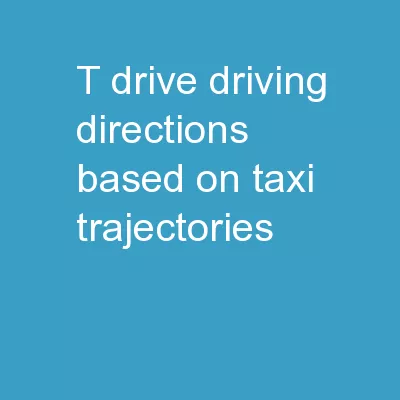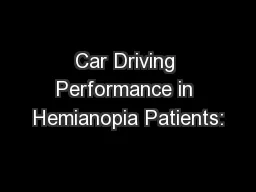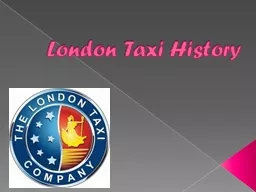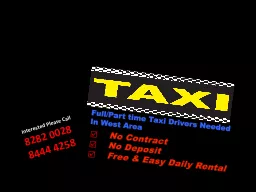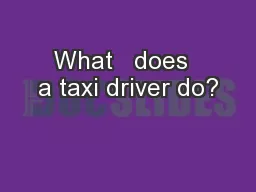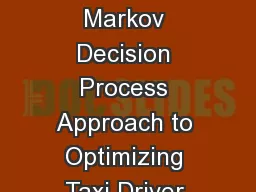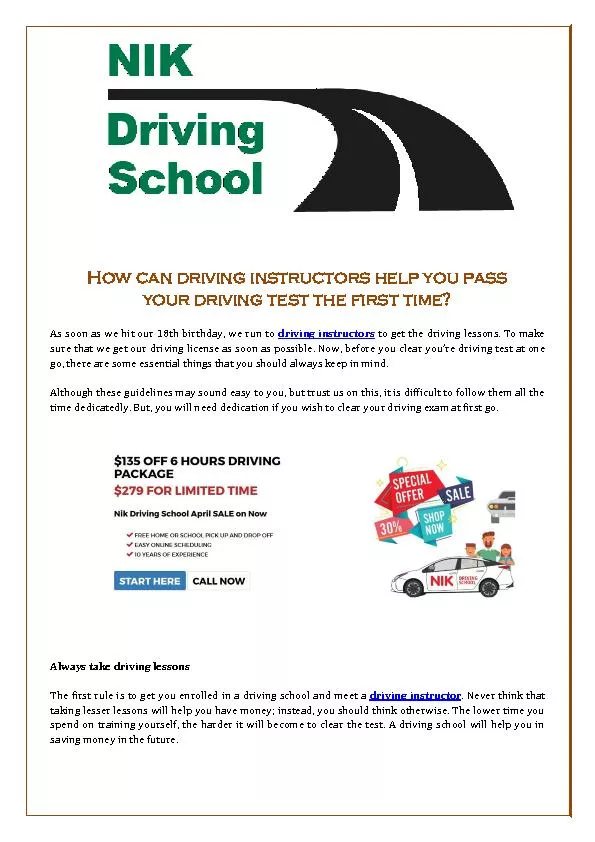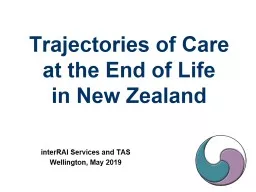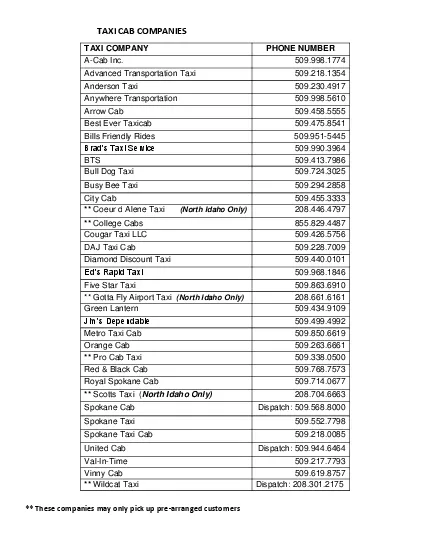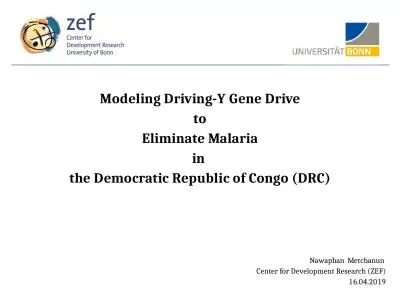PPT-T-Drive : Driving Directions Based on Taxi Trajectories
Author : liane-varnes | Published Date : 2019-02-28
Microsoft Research Asia University of North Texas Jing Yuan Yu Zheng Chengyang Zhang Xing Xie Guanzhong Sun and Yan Huang What We Do A smart driving direction
Presentation Embed Code
Download Presentation
Download Presentation The PPT/PDF document "T-Drive : Driving Directions Based on Ta..." is the property of its rightful owner. Permission is granted to download and print the materials on this website for personal, non-commercial use only, and to display it on your personal computer provided you do not modify the materials and that you retain all copyright notices contained in the materials. By downloading content from our website, you accept the terms of this agreement.
T-Drive : Driving Directions Based on Taxi Trajectories: Transcript
Download Rules Of Document
"T-Drive : Driving Directions Based on Taxi Trajectories"The content belongs to its owner. You may download and print it for personal use, without modification, and keep all copyright notices. By downloading, you agree to these terms.
Related Documents

